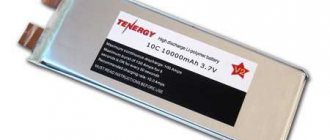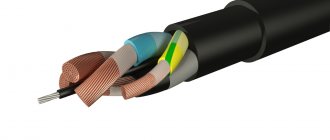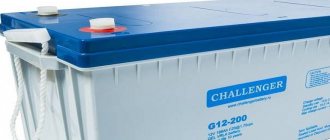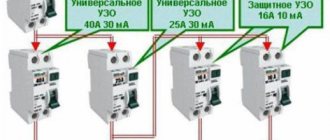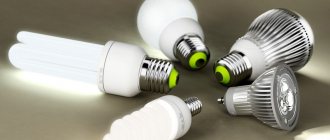For more than a century, lead-acid batteries (AB) continue to remain relevant due to their low cost, unpretentiousness and almost complete absence of “memory effect”. But they had a significant drawback - due to the need to remove gases released during operation, the battery case cannot be made completely sealed. For this reason, and also because of the use of liquid electrolyte, lead-acid batteries are critical to their position in space. They can only be used in one strictly defined position.
12 volt lead acid battery
For use on satellites and spacecraft, nothing better than lead-acid batteries was found either, but the question arose - how to achieve operation in any position and how to ensure the tightness of the case? As part of the work on this project, two technologies emerged - AGM batteries, where a special fiberglass separator is impregnated with electrolyte, and so-called gel batteries (otherwise known as GEL - Gelled ELectrolite), which will be discussed in the article. Like many “space” inventions, gel and AGM batteries eventually began to be used in everyday life. Yes, since we are talking about high technology, we should warn against using the incorrect term “gel batteries”, which is widespread among ordinary users. There is no helium in these batteries, and the concept of “gel” means a jelly-like mass and is well known to us at the everyday level. At first glance, everything is very simple - a substance is added to the electrolyte (usually a silicon compound), which causes it to thicken to a jelly state with practically no fluidity. But this solution radically improves the battery parameters. At the same time, continuity with previous batteries is maintained - the emf of one cell is still 2.1 V.
Batteries with gel electrolyte Fiamm series SMG Endurlite (OPzV Gel) - on the left and series SMG12V Endurlite (Gel) - on the right
What is a gel battery, its design, characteristics, service life
A gel battery is a lead-acid power source in which the electrolyte between the plates is in an absorbed, gel state. Gel technology means that this power source is completely sealed and maintenance-free, the operating principle of which is no different from other types of batteries.
Design of gel batteries
In conventional lead-acid batteries, the electrolyte is presented in the form of a mixture of distilled water and sulfuric acid. Gel technology differs in that the acid solution in the battery is in the form of a gel. This electrolyte structure is achieved by adding a silicone filler to the composition, thickening the mixture.
Several high-strength plastic cylindrical blocks connected to each other form the housing of the gel power source.
Main elements of the power supply:
- positive and negative electrodes;
- porous separator plates;
- electrolyte;
- valves;
- terminals;
- frame.
The principle of operation of a gel power source is similar to this process in conventional lead-acid batteries - a charged source releases a charge. During this process, the voltage drops and the density of the electrolyte decreases.
Characteristics of Gel batteries
When choosing a new gel power source, you need to pay attention to the following parameters:
- Capacity - measured in amperes/hours. Shows how long the power source can supply 1A current.
- Maximum charge current - the maximum permissible current value when charging the battery.
- The maximum discharge current, also known as the starting current, shows the value of the maximum current that the battery can provide for 30 seconds.
- The operating voltage at the terminals is 12V.
- The weight of the power supply depends on its capacity and varies from 8.2 kg (26 Ah) to 52 kg (260 Ah).
Marking of gel batteries
An important parameter when choosing a new power source is its production date. The format for indicating this information varies by manufacturer. Let's look at the main examples:
- Optima: the numbers are embossed on the plastic: the first one is the year, the next ones are the day of production. For example: 3118 means 2013, day 118. On some models, the production date can be found on a sticker: the top row is the month, the bottom row is the year.
- Delta: on a sticker with a set of numbers and letters, we are interested in the first four characters. The first (letter) is the year starting from 2011 (A).
The second (letter) is the month starting from January (A).
Third and fourth (digits) - day of the month
- Varta: in the production code, the fourth digit is the year of manufacture, the fifth and sixth are the month (January 17, February 18, March 19, April 20, May 53, June 54, July 55, August 56, 57 -September, 58-October, 59-November, 60-December).
Service life of gel batteries
The service life of the gel battery, as reported by manufacturers, is about 10 years. However, it is worth understanding that it may change depending on operating conditions.
Temperatures that are too low (less than −30 °C) or too high (more than +50 °C) can reduce the service life of the Gel battery. This is due to the fact that under such conditions the electrochemical activity of the power source either decreases or increases. It is worth noting that an increase in temperature entails an acceleration of plate corrosion. Constant undercharging of the battery also leads to a decrease in battery life. However, excessive charges have a negative impact on service life.
In order to use the gel power source for as long as possible, it is recommended to avoid deep discharges and store the battery for a short time in dry rooms with a temperature range from −35 °C to +50 °C.
Manufacturers
- Deka;
- Varta;
- Bosch;
- Optima;
- Delta;
VARTA ULTRA DYNAMIC Company
Gel batteries from Varta are an invention of German engineers. They managed to make the battery reliable. The electrolyte in their model is able to be absorbed into a separate separator and immediately turn into a gel. Such a battery can operate in any position. True, there is one drawback, this is the loss of power at low temperatures. Plus the high cost.
Battery from Optima Yellow Top
This is the development of American scientists. They learned how to lay the plates in a special way. Due to this, the produced batteries have decreased in size. They can be recognized by their cylindrical jars. Such batteries with a small capacity have a starting current of up to 765 A. They can withstand heavy loads well. The cost of such batteries varies around 20,000 rubles.
Gel battery DELTA GX 12-60
The manufacturer promises a high service life of up to 10 years. Withstands temperature changes from -40 to +40 degrees Celsius.
Production of gel batteries
To obtain a thick filler, silicon particles or fiberglass-based filler are added to its composition. How such batteries are created is actually classified information. So to speak, a trade secret. The video below talks a little about them.
Video about gel batteries
How much does a gel battery cost?
Prices depend on characteristics. In modern markets, small batteries can be found at a price of 600 rubles. The maximum cost limit reaches 80,000 rubles. For this money you can buy a full-fledged motorcycle.
Reviews of gel batteries
There are both positive and negative reviews on the Internet about this miracle of technology. Some of them are related to complaints about gel. But who knows, maybe these owners grossly violated the operating rules. For example, they charged it with high current or froze it very much. That's why they didn't like him.
A couple of screenshots with reviews
Pros and cons of gel batteries
The advantages of gel batteries include:
- long service life (about 10 years);
- a large number of charge-discharge cycles;
- up to 400 full discharges;
- there is no need to urgently charge the power source in case of deep discharge;
- small capacity losses in case of battery downtime (about 20% per year);
- durability and reliability of this type of power supply due to high-quality components;
- high efficiency with low internal resistance;
- do not require maintenance;
- They are characterized by safe operation due to the impenetrability of the housing.
At the same time, it is worth mentioning some of the disadvantages of batteries made using gel technologies:
- When charging the power supply, the supplied voltage should be monitored. If the permissible value is exceeded, the process of component destruction will begin.
- The sensitivity of gel batteries to low temperatures due to the solidification of the electrolyte and the deterioration of its properties.
- Battery sensitivity to short circuits.
- High cost compared to lead-acid batteries.
Scope of application
Gel battery in a car
Despite the improved technical characteristics that are superior to previously used analogues, the gel models are compact in size. Not so long ago, a spiral type of arrangement was used in these devices. Where the plates are helical. And the separator, together with the electrolyte, is concentrated in the center of this entire spiral structure.
The advantages of gel-filled batteries make their use valuable for cars that participate in rallies, or that are often used in adverse weather conditions.
Considering the constant power supply and the reliability of the devices, these batteries serve as an excellent source of energy that improves the performance of audio systems. And due to the absence of gas in the battery, they can be placed directly in the car interior. This, in turn, will reduce the costs of the vehicle owner for purchasing a large amount of wiring.
When choosing the best option, you should pay attention to the manufacturers. Trusted companies always seem to be the most attractive to buyers. One of the characteristic features that some consider to be a disadvantage of gel batteries is their high cost.
Comparison: which battery is better, gel or acid?
If everything is clear about the advantages of gel batteries, then what can be said about lead-acid batteries?
They are time-tested and their positive aspects have long been known:
- low cost;
- acceptable service life is about 5 years;
- overcharge resistance;
- ease of maintenance and charging.
The comparison shows that a conventional battery is not much inferior to gel technologies. The main advantages of gel technology include a longer service life, lower losses during vehicle downtime and resistance to deep discharges.
Comparison: which battery is better, gel or AGM?
AGM batteries are distinguished by the presence of an electrolyte that is not liquid or gel - the acid solution fills the fiberglass, which is located between the plates. Due to the rather compact arrangement of the material, the dimensions of agm batteries can significantly increase the capacity of the power source. These batteries are characterized by low internal resistance, which allows us to talk about the fastest charging of the power source and rapid discharge due to the ability to deliver high currents. AGM batteries can withstand over 200 full discharges. The only rational reason to abandon gel batteries in favor of AGM may be the need for high starting currents to start the car in cold weather. In other parameters, AGM technologies are significantly inferior to gel ones.
History of development
Let's look a little at the history of the creation of GEL batteries. Like many other modern advanced technologies, gel batteries came to the automotive industry from the military industry, or more precisely, from aviation. The fact is that batteries with liquid electrolyte cannot be used on airplanes, since the electrolyte may simply leak out during various maneuvers. Batteries must also withstand frequent temperature changes. The output was batteries with electrolyte in a gel state. Just do not confuse the concepts of “gel” and “helium”, since the latter implies the use of helium gas, and not a viscous substance.
Gel battery
The creation of gel batteries began in the post-war years in Germany. The son of a pharmacist, Yakov Sonnenshain, worked part-time as a photographer. For the flash, he had to carry a heavy battery with liquid electrolyte, which constantly spilled and ruined his clothes. He came up with the idea of thickening the liquid by adding silica gel and formalin. Formalin acted as a stabilizer, and silica gel as a thickener. Then it appeared, which for a long time was a monopolist and the only manufacturer of batteries of this type.
Charging gel batteries
Gel batteries are quite sensitive to current and voltage, so charging such a power source requires adjusting these characteristics. Devices that traditionally charge lead-acid batteries are not suitable for charging a Gel battery. Therefore, the question of how to properly charge a gel battery is worth considering in more detail.
How to properly charge a gel battery?
To properly charge a gel battery, you must use a current equal to 10% of the battery capacity. For example, a 60 Ah battery must be charged with a current of 6 amperes. For urgent recharging, you can use 30%, that is, 18A maximum for the specified capacity. There is a sticker on the battery case that indicates the recommended maximum charging current for a particular model - Max initial current (No. 1 in the photo below)
The voltage value is also important - it should not exceed 14.5V. Otherwise, a destruction process will begin inside the battery - the gel will become more liquid and lose its properties. The recommended charging voltage is indicated by the manufacturers on the sticker after the words Cycle use (No. 2 in the photo above). In this mode, it will take 10–12 hours to fully charge the battery.
Please note that gel batteries have a charging mode to save energy. This method is used as part of power source maintenance and is recommended for periodic battery recharging. What voltage the power source can be charged to maintain its functionality is also indicated on the sticker in the Standby use line (No. 3 in the photo above).
What kind of charging is needed for gel batteries?
The modern market offers a large number of various battery chargers. However, it is worth remembering that only lead-acid batteries can be charged from any equipment.
Gel power supplies are demanding on voltage and current, so using unregulated charges can damage the battery. Let's figure out what kind of charger is needed to service a gel battery.
- Cuts off the current after charging is complete and protects against overheating.
- Voltage stability.
- Temperature compensation - Charging parameters must be adjusted depending on the temperature of the battery and the environment.
- Current adjustment.
If there is a sudden change in voltage, current or temperature, the gel power supply fails.
Manufacturers recommend charging the power supply in stages:
- with increasing voltage;
- reduction of charging current;
- minimum current and voltage values.
Thus, to charge gel batteries, pulse chargers are needed that allow you to regulate the current and voltage, and also have a current shutoff function.
Recovery
In order to revive such a battery, you need to remove the covers from the battery compartments and start pouring distilled water into each jar. Despite the fact that these batteries are classified as maintenance-free, it is always possible to remove their covers. Add water using a syringe, two milliliters into each “jar.” After half an hour, remove excess water with a rubber bulb - it should slightly cover the plates. Close the battery, place a weight on top (to prevent the caps from being knocked out by high pressure) and start charging.
You can revive the battery by applying a voltage of more than 14 volts. To restore it, at the beginning of charging you will need a voltage of at least 15 volts. It is necessary to keep it on charge for about 14 hours, first waiting for the moment when it begins to consume current. If the battery does not respond to a voltage of 15 volts, it can be raised to 30. When the battery finally “swings”, after two or three such cycles, charge it in the usual way - with a current of 10 percent of its capacity, reducing the voltage to 14 volts.
However, many experts do not recommend reconditioning batteries of this type. Often the effect is only temporary.
Do-it-yourself charging for gel batteries
If you have certain skills and the desire to assemble a battery charger yourself, then you can do this using the presented diagram and video.
More details on how to assemble a charger on a L200C battery chip can be found in this article: https://rustaste.ru/improvised-charger-for-gel-batteries-l200c.html
GEL batteries
These batteries have an even longer service life. In some cases, they can be charged/discharged up to a thousand times without the device losing its capacity. Many people think that GEL is helium. However, it is not. This is exactly the gel. This design uses silica gel as a separator between the lead plates. Even at the battery manufacturing stage, they fill up all the free space in the case. When silica gel becomes as hard as possible, pores form in it. The latter will contain and retain the electrolyte in the form of a gel.
Maintenance: how to restore a gel battery, replacing the electrolyte
If you maintain the power supply according to the manufacturer's recommendations, then most likely it will serve its service life without problems and will not require additional actions. If the power supply is swollen or the plates are destroyed, we recommend that you do not restore it, but purchase a new one. In what cases can you try to revive a gel battery?
If you notice a loss of capacity in your battery, then the gel component may have dried out. In this case, it is necessary to restore the water balance of the element using distilled water. Next we will tell you step by step how to do this.
- Remove the plastic cover.
- Remove the rubber seals on the jars.
- Take a syringe and draw 1-2 cubes of distilled water.
- Pour water into each jar.
- Leave the battery for several hours to allow the gel to soak in water.
- If there is not enough water, add more; if there is excess, remove it with a syringe.
- Check the voltage level at the terminals.
- Replace the plugs and close the battery cap.
- Place the battery on charge.
Also, reviving the battery may be necessary if there is severe sulfation of the plates, which forms during battery operation. There are two methods of desulfation:
- Using the chemical composition Trilon V. It must be purchased, diluted in the specified proportion and poured into a previously drained battery. Please note that in gel batteries it is not always possible to completely remove the electrolyte in the form of a gel. After desulfation with Trilon B, you will need to rinse the insides with distilled water, pour the gel electrolyte into the battery again, having previously prepared the solution. As you can see, the method is quite troublesome and requires knowledge and skills.
- Using pulse currents of various amplitudes. During this operation, pulsed currents destroy lead sulfate. It is worth noting that gel batteries, as mentioned above, react extremely negatively to sudden voltage changes and increased currents. Users who have tried this method say that it is not always possible to achieve their goal. This is explained by the fact that in addition to lead sulfate, the plates themselves are destroyed, and this entails a loss of capacity.
As you can see, there are ways to recondition batteries, however, they are not very suitable for gel power sources. We recommend not trying to revive a gel battery, but purchasing a new one.
Is it possible to fill a gel battery with electrolyte or water?
As part of the maintenance of gel batteries, you can add distilled water to them in the manner that we described above. It is not recommended to pour ordinary tap water into power sources - it contains too many impurities that will interfere with the proper reaction.
Pure electrolyte is not poured into gel batteries. You can try to make an absorbed electrolyte, however, we cannot vouch for the results of such an experiment.
Gel batteries for cars are quite popular due to the lack of maintenance required. As you can see, the operation of these power supplies is extremely simple. However, many are put off by their high cost. With proper maintenance - timely recharging, compliance with storage conditions - this battery will last a long time, and restoring capacity will not take much time and effort. How do you care for a gel battery? Have you ever encountered problems while charging or restoring? Share your experience with our readers.
A few words about the gel electrolyte
You know, many people ask me - what is this gel? How is the electrolyte contained in it? Or is it the gel itself - the electrolyte?
To be honest, there is not much information in the public domain; you can understand the principle, but this is a trade secret, but I managed to find something.
These batteries use a regular acid electrolyte - only it is “locked” in a gel, as I emphasized above (silicon dioxide base).
If the structure is disassembled into its components, it becomes clear:
This is a kind of “sponge” in which the electrolytic liquid is located, but it is locked there, that is, it cannot evaporate, cannot freeze, etc. But it fits perfectly to the battery plates, which provides protection and fast charging - a definite plus.
This liquid has been sorted out, although the information may not be 100 percent, but the essence remains the same. Still, if the information were in the public domain, our market would simply be flooded with Chinese gel batteries, but now there is no such “boom”, which means it’s still a secret.


